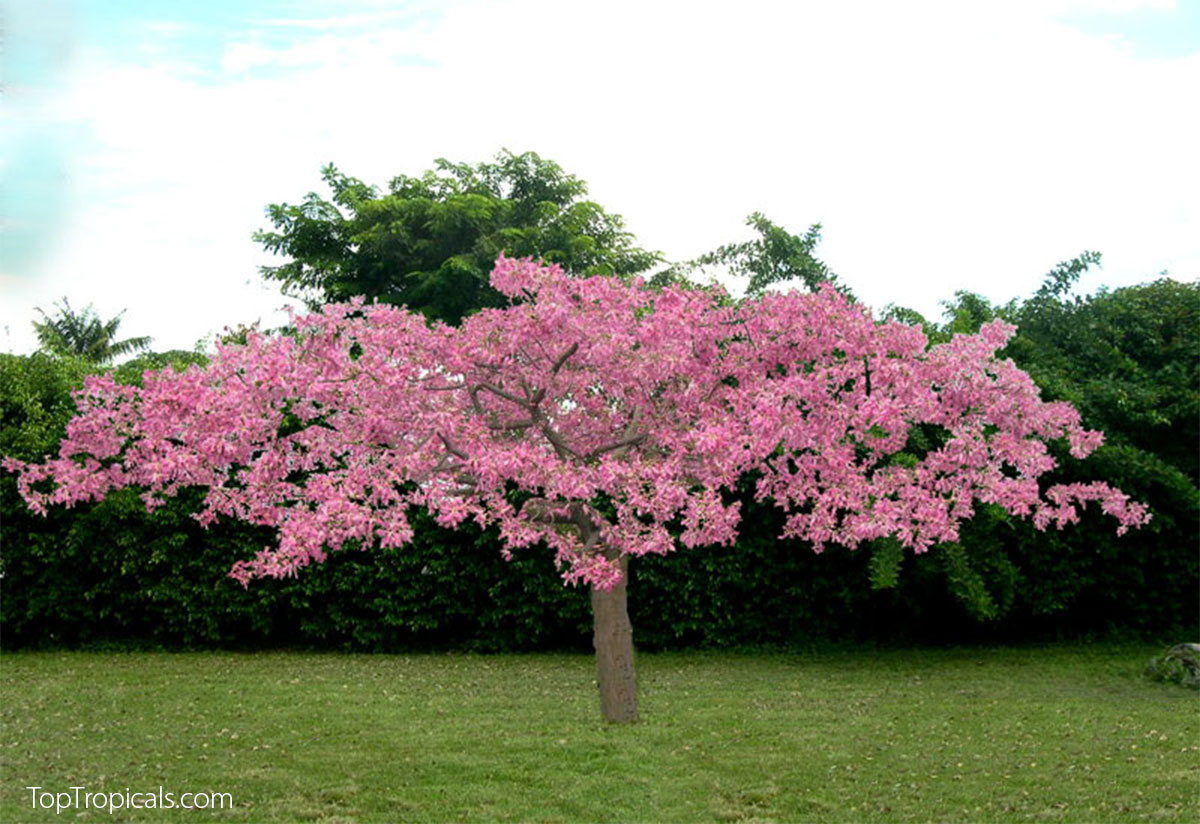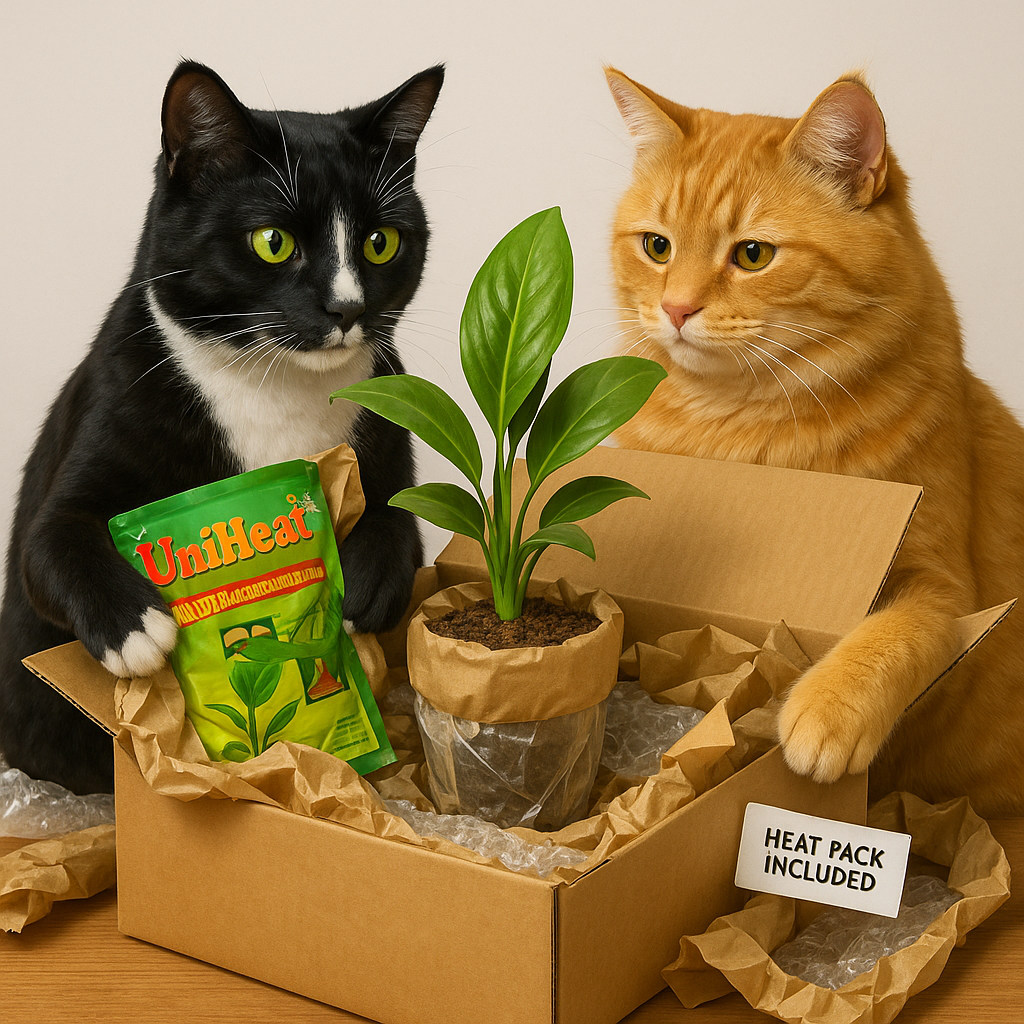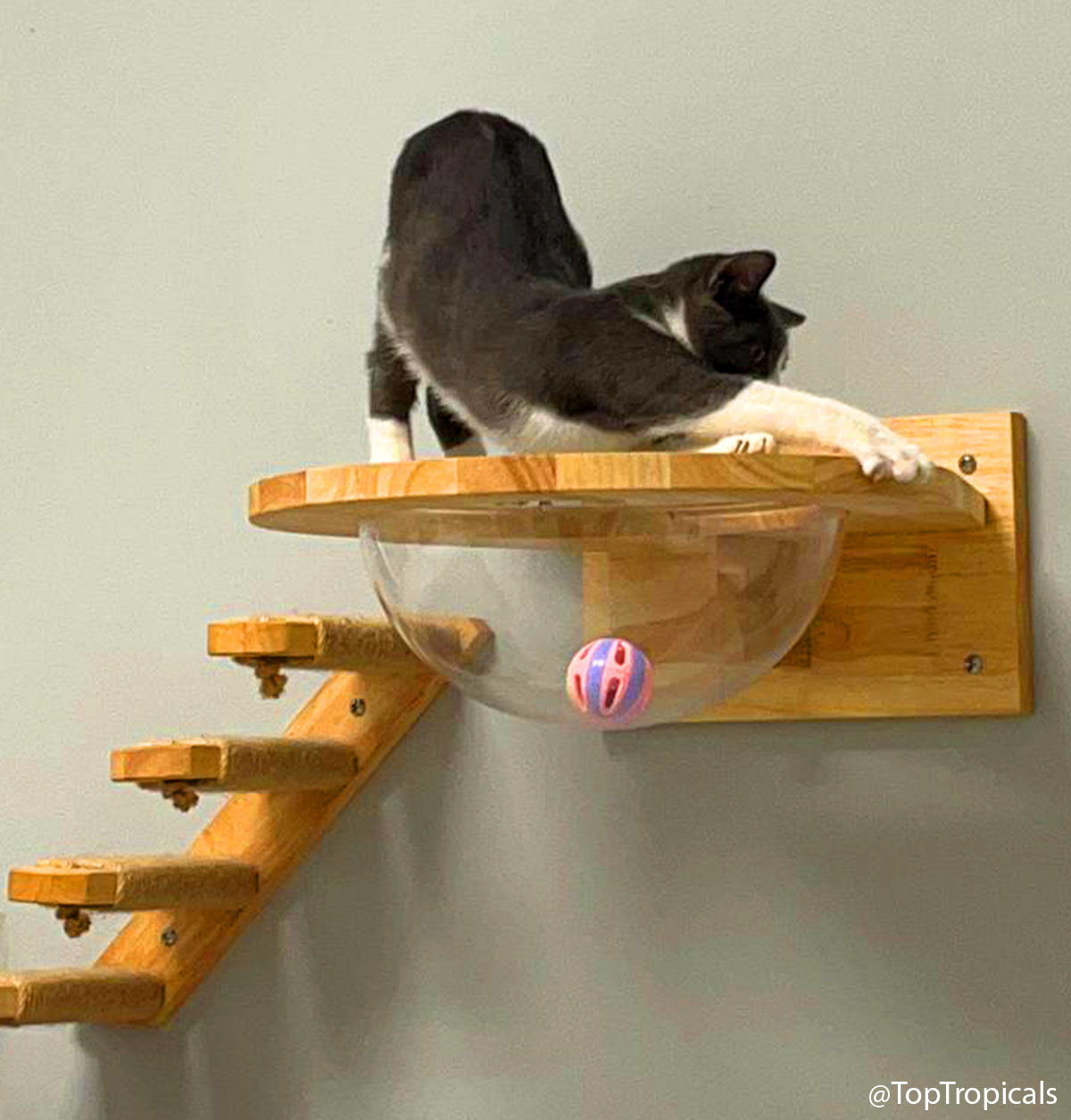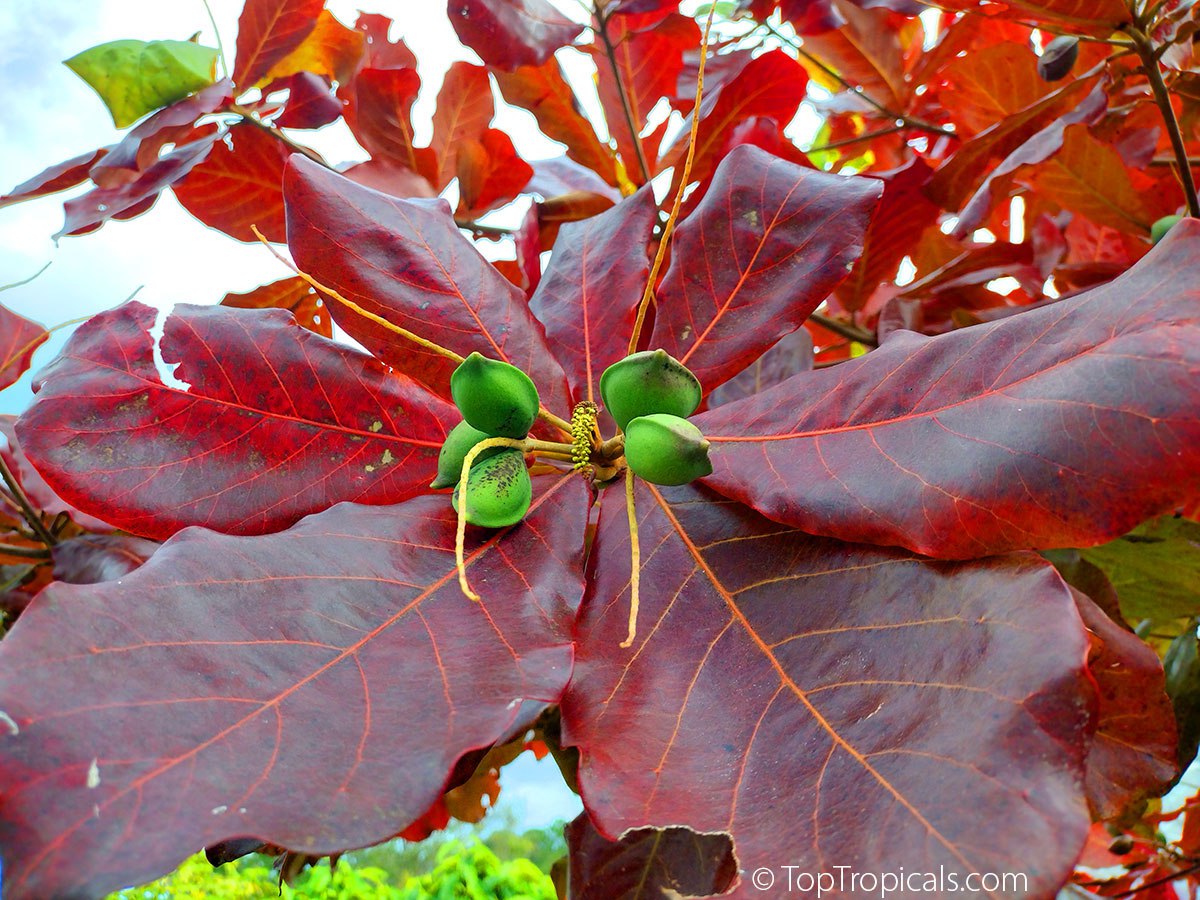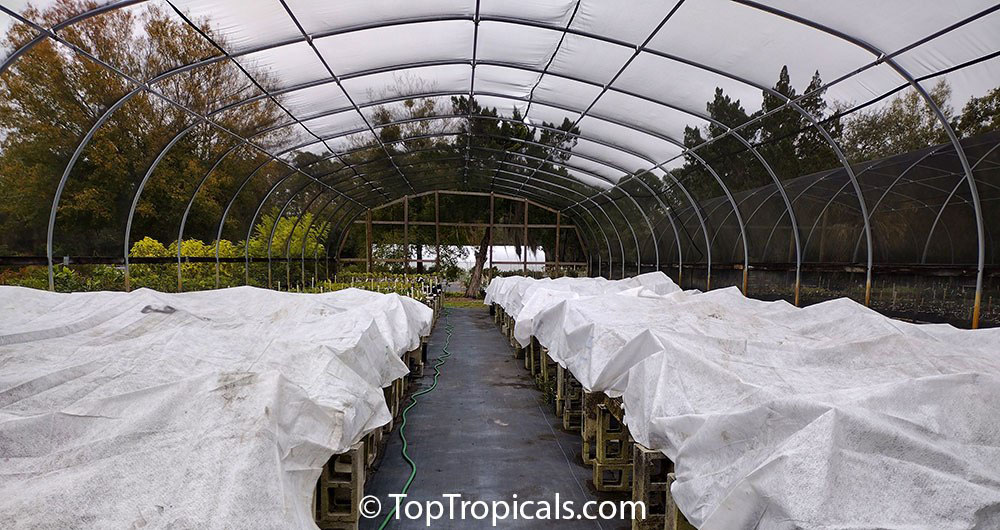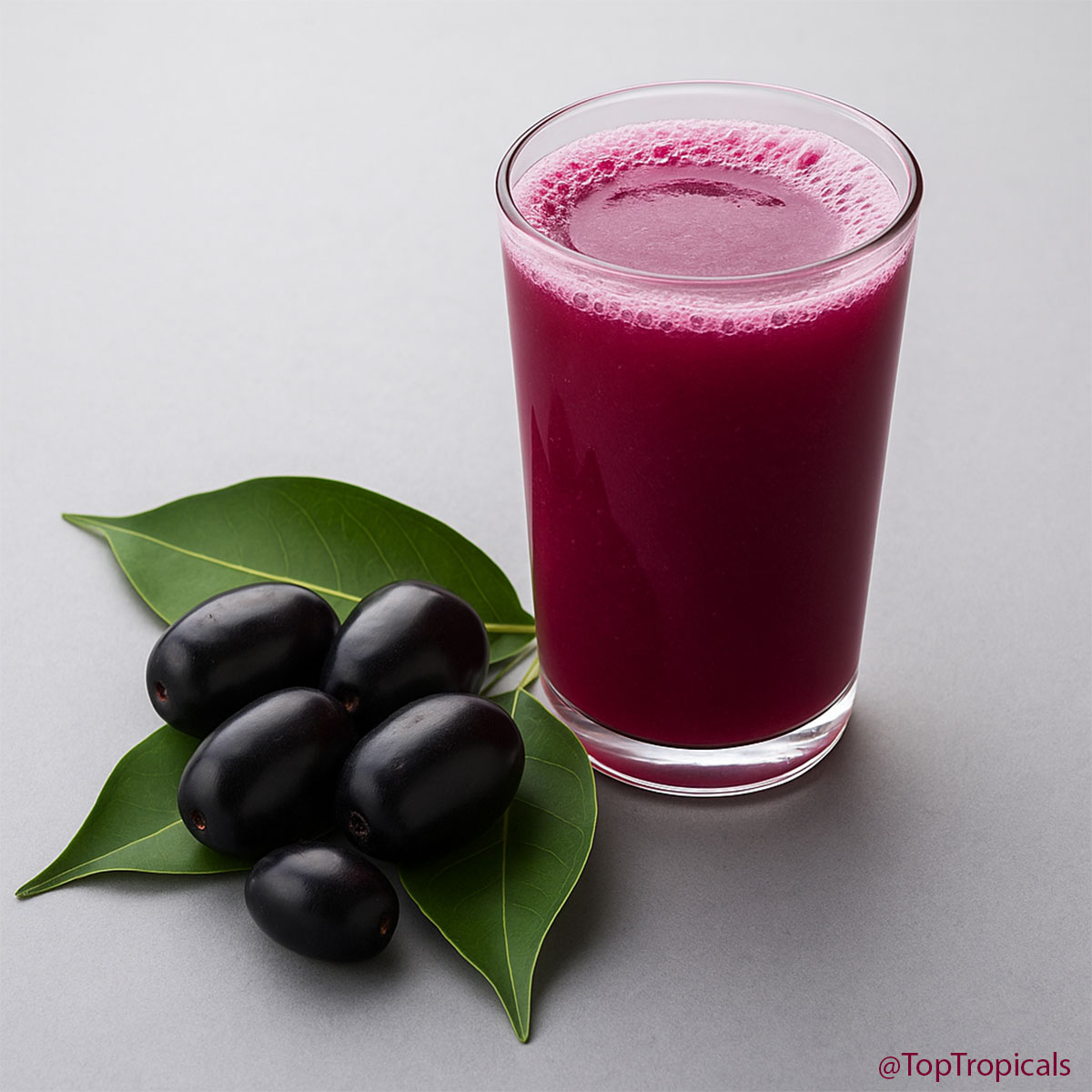Garden Blog - Top Tropicals
Date:
❄️Cold Night Survival Guide

Smokey and Sunshine Prepare Plants for the Cold Night.
Smokey: Come on, Sunshine, help me move these plants inside before it gets
dark!
Sunshine: I am helping... see? I’m supervising the mango
tree.
Smokey: You call that supervising? The frost cloth’s upside down!
When the forecast drops into the 30s, panic is not a plan. This is your simple, clear checklist to protect every tropical in your garden. Think of it as the quick emergency manual that goes hand in hand with the previous cold-weather newsletter.
"We all love our tropical flowers, mangoes, bananas, and rare fruit trees. A single cold night does not have to be a disaster. The key is knowing what to do, when to do it, and what mistakes to avoid." - Tatiana Anderson, Top Tropicals Plant Expert
🌡️ FROST AND FREEZE
A frost and a freeze are not the same. A frost is when you see ice crystals on leaves or grass, while a freeze is when the air temperature drops below 32 F. The tricky part is that you can get frost even when the air is above freezing, and you can have a freeze with no frost at all. It all depends on humidity and the dew point. If the dew point is below freezing, the ground can cool faster than the air, letting frost form even when your thermometer reads 35 or 36 F. And once the air itself drops below 32 F, even for an hour, tender tropicals can be damaged. For plants, a freeze is far more dangerous, because freezing air pulls heat out of stems, branches, and roots. Frost usually burns leaves, but a true freeze can injure wood, kill buds, and damage the entire plant.
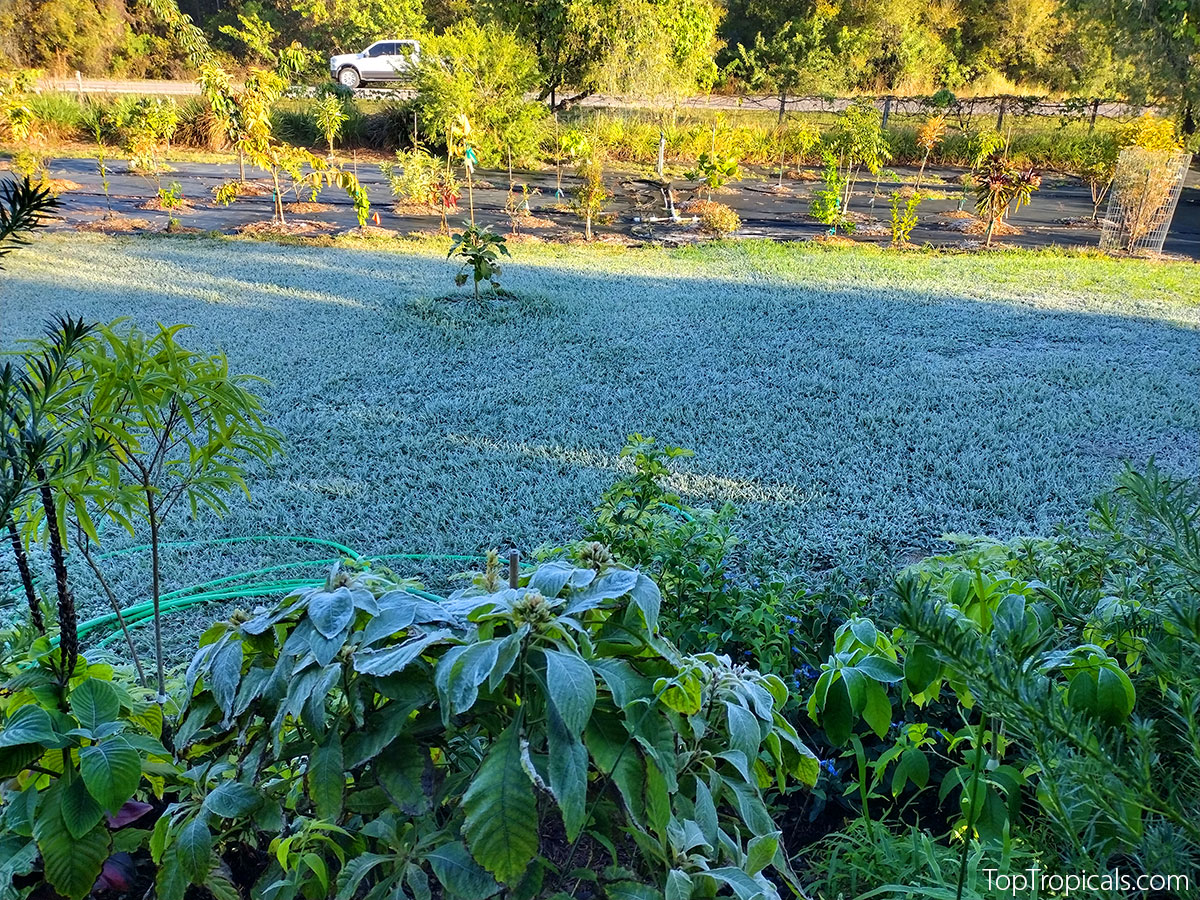
Frost on the grass and leaves on Winter morning in Central Florida
WHAT TO DO AND NOT TO DO BEFORE A COLD SNAP
✔️ 5 THINGS TO DO:
- Water well. Hydrated plants tolerate cold better than dry, stressed ones.
- Add mulch. A thick layer around the base keeps roots warm.
- Block the wind. Move pots to a sheltered corner or patio.
- Cover at night, uncover in the morning. Let plants breathe and get light.
- Add gentle heat if needed. Non-LED Christmas lights or a small old style 15-20W light can raise temps a few degrees.
❌ 5 THINGS NOT TO DO:
- Do not prune or trim. Fresh cuts freeze first.
- Do not overwater. Wet, cold soil invites root rot.
- Do not let plants dry out either. Wilted plants freeze more easily.
- Do not use dry fertilizer. Gentle liquid feeds like Sunshine Boosters are safe to use with every watering: its intake naturally slows down as watering decreases.
- Do not look only at the thermometer. A long, windy night can be worse than a short freeze.
TEMPERATURE ACTION GUIDE (40 to 25 F)
- 40 to 38 F: Move potted plants to shelter, water soil, and cover tender tropicals.
- 37 to 33 F: Use frost cloth and anchor it down so the wind does not lift it.
- 32 to 30 F: Add a heat source like non-LED lights.
- 29 to 25 F: Double-cover sensitive plants, wrap trunks, and protect roots heavily.
COLD TOLERANCE BY PLANT TYPE
Before a cold night, it really helps to know your plant’s exact cold limits. Every species is different, and young plants are always more sensitive than mature ones. Take a few minutes to look up your varieties in our Tropical Plants Encyclopedia — it will tell you the safe temperature range, how much protection each plant needs, and which ones must be covered or moved before the next cold snap hits.
- Bananas: leaf burn below 37 F
- Mango, Annona: hurt around 32 F
- Cold hardy avocados: Mature tree can take about 25 F. Young trees must be protected
- Olives, Citrus, Guava, Jaboticaba: usually OK outside with mulch
QUICK-ACTION TABLE
Before the cold arrives, make yourself a quick list of every plant and what action each one needs. It saves time when temperatures start dropping and keeps you from scrambling in the dark. Check that you have enough frost cloth, blankets, and supplies on hand so you can cover everything without rushing. Planning ahead makes cold nights much less stressful.
- Bring Indoors: Cacao, Bilimbi, Coffee. They need warm, bright light.
- Cover Outdoors: Mango, Jackfruit, Banana, Annona. Use frost cloth, not plastic on leaves.
- Leave Outside: Eugenias, Peaches, Persimmons, Longan, Lychee, Papaya, Citrus, Loquat, Hardy Avocado. Add mulch and monitor overnight lows.
🛒 Check out cold tolerant tropicals
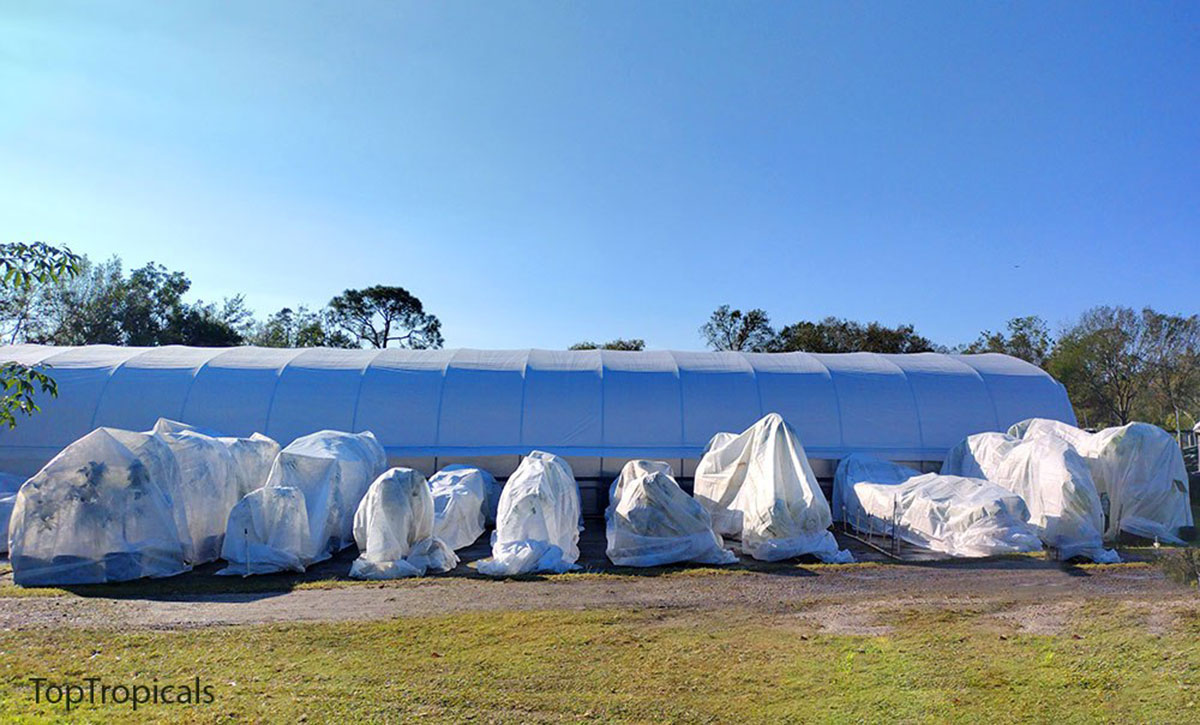
Covering large mango and avocado trees in pots at TopTropicals during cold nights
GADGETS AND TOOLS THAT HELP
- Indoor helpers: LED lights, small heaters, bottom-heat mats, timers.
- Outdoor helpers: frost cloth rolls, mini greenhouses, non-LED Christmas lights or small incandescent lights, smart thermometers.
Always keep electrical safety in mind, especially if you are using extension cords outdoors. Use only weather-rated cords, keep all connections off the ground, and protect plugs from moisture. Make sure heaters and lights are stable, secured, and never touching fabric covers. A few minutes of safety check can prevent a dangerous situation on a cold, wet night.
And if you want to keep plants strong through winter, add Sunshine Boosters to your watering routine. It is gentle, safe in cold weather, and gives plants an extra edge.
AFTER THE COLD PASSES
In the morning, uncover plants. Leaving covers on during the day can trap heat and cook the tender new growth, especially under the sun. The only exception is true frost cloth designed for all-day use, which allows air, light, and moisture to pass through. Regular blankets, sheets, and plastic must come off as soon as the sun rises.
Do not cut anything yet. A plant can look completely dead after a freeze, but many branches are still alive under the bark. Cutting too soon removes wood that would recover on its own. Wait until new growth begins in spring. That is when you can see exactly which branches are truly dead.
Use the scratch test. Gently scratch the bark with your nail or a small knife. If the layer underneath is green, the branch is alive. If it is brown and dry, it is likely dead. But even then, wait until warm weather to be sure, because sometimes only the tips die back while the lower part of the branch survives.
Once the weather stabilizes, resume light feeding. Plants coming out of cold stress need gentle support, not heavy fertilizer. A mild liquid feed like Sunshine Boosters helps them rebuild roots and push new growth without burning tender tissue.
Dwarf Ceiba Pink Princess (Grafted) - a unique compact cultivar covered with pink flowers in Winter. Watch short video: How this breath-taking flowering tree stays so compact.
WHAT NOT TO DO
- Do not prune right after a freeze.
- Do not overwater cold soil.
- Do not fertilize heavily until spring.
- Do not leave covers on in full sun.
CLOSING THOUGHT
Your tropical garden can survive any cold night if you prepare right. Cold snaps always feel stressful in the moment, but once you know your plants, have the right supplies, and follow a simple plan, it becomes routine. A few minutes of preparation before dark can save months of growth and keep your collection healthy all winter.
Frost cloth is the true workhorse of cold protection: it keeps heat in, keeps frost off, and will not suffocate plants the way plastic or blankets can. Having a few rolls ready means you never have to scramble at the last minute. Sunshine Boosters give your plants gentle support during the colder months so they stay strong enough to bounce back quickly when warm weather returns.
A little planning now will pay off in spring, when your mango, banana, citrus, and all your favorite tropicals come back happy and ready to grow.
Updates from Mittens
- 🐾 Mittens is growing up fast and turning into a beautiful young lady! She still follows Chiane to work every single day and hasn’t missed a shift yet. Talk about dedication! Sometimes you just get lucky and find the perfect team member - and we sure did!
🐾 At TopTropicals, we’re truly blessed with a crew of hardworking, happy people and equally devoted #PeopleCats.
🐾 When you visit our Garden Center in Ft Myers, don’t forget to say a few kind words to our team - they work tirelessly to care for the plants and make sure each one is shipped safely to your home.
🐈📸 Mittens the Cat relaxing after hard work at TopTropicals PeopleCats.Garden
#PeopleCats
🟢 Join 👉 TopTropicals
How to bring butterflies in your garden with Ditchmans Pipe
Aristolochia trilobata - Birthwort Dutchman's Pipe
- 🐙 Aristolochia trilobata - Birthwort Dutchman's Pipe, is one of the most striking butterfly plants. The brown-and-green, pitcher-shaped flowers with long striped tails look like something from another world, and the glossy lobed leaves give the vine a bold, tropical look.
- 🐙 What makes this plant truly special is how butterflies respond to it. They are drawn to the scent of the flowers and use the vine as a host plant, laying their eggs on the leaves. If you want butterflies, this is one of the easiest ways to bring them in and support their full life cycle.
- 🐙 This vine is tough and adaptable. It grows well in subtropical climates, handles low light, and can even be kept indoors. Give it a trellis or a fence and it quickly turns into a showpiece.
- 🐙 Beautiful, unusual, and a butterfly favorite - Dutchmans Pipe is a natural magnet for life in your garden.
🛒 Bring butterflies to your garden!
📚 Learn more:
- ▫️Dutchman's Pipe - the best butterfly attracting vine
- ▫️Giant Pelican Flower
- ▫️Giant, coolest looking flower
#Butterfly_Plants #Hedges_with_benefits #How_to
🟢 Join 👉 TopTropicals
Tropical almond brittle: quick-n-fun exotic recipes
- 🟢Caramelize sugar, stir in roasted tropical almonds (Terminalia catappa), spread thin.
- 🟢Let cool, harden, and break into crunchy, nutty shards.
🛒 Grow your own almonds
📚 Learn more:
▫️Where do almonds come from?
#Food_Forest #Recipes
🟢 Join 👉 TopTropicals
Hurricane season is not over! Here is the safest place
Cat Timo
"Shelter yourself from the storm on the inside. Others can only hold the umbrella." - Mahatma Gandhi
🐈📸 Cat Timo on a rainy day at TopTropicals PeopleCats.Garden
#PeopleCats #Quotes
🟢 Join 👉 TopTropicals
What to do and not to do before a cold snap?
Growing tropical plants outdoors? Here are a few practical notes for your cold protection guide.
⭕️ 5 things to DO to prepare your plants before a cold snap:
1. Water well. A well-hydrated plant is stronger. Juicy stems and leaves handle cold better than dry ones.
2. Add mulch. A thick layer around the base helps insulate the roots and keep them warm.
3. Block the wind. Move pots to a sheltered spot or set up a windbreak.
4. Cover at night, uncover by day. Use frost cloth, blankets, or plastic at night - but remove during the day so plants don’t overheat in the sun and can get as much light as possible.
5. Add gentle heat if needed. Christmas lights or a small heater can help - just use caution and make sure everything is safe.
❌ 5 most common mistakes, what NOT to do before or during a cold snap:
1. Don’t prune. Fresh cuts and new growth are tender and will freeze first.
2. Don’t overwater. Cold and soggy roots can rot. Keep soil moist, not soaked. Water just enough to quench the plant’s thirst and fill stems and leaves with moisture. Cold and wet is a dangerous combination.
3. Don’t let plants dry out either. Wilted, thirsty plants are more likely to suffer cold damage. Cold and dry can be just as harmful as cold and wet.
4. Don’t use dry fertilizer. It can burn roots in cold soil. A gentle liquid feed like amino-acid Sunshine Boosters is an exception and safe to use with every watering. Its intake naturally slows down as watering decreases.
5. Don’t just watch the thermometer. Duration and wind chill matter. A long cold night with wind can do more harm than a brief freeze.
✔️ Keep these in mind, and your plants will thank you when the cold passes!
#How_to
🟢 Join 👉 TopTropicals
I love Fridays!
"Me by the end of Friday business day"
Are you also looking forward to the weekend?
🐈📸 Cat James Coconuts is a hard worker at TopTropicals PeopleCats.Garden
#PeopleCats
🟢 Join 👉 TopTropicals
What is a Dwarf Condo Avocado that fruits at 3 ft tall?
Dwarf Condo Avocado Fuerte
- Every fruit lover dreams of growing lots of avocado varieties, but space often gets in the way. The good news is that some avocado trees stay naturally small and compact, making them perfect for patios, balconies, and even indoor growing. These are called Condo Avocados.
- They have the same tasty fruit as full-sized trees but take up much less room. You can easily grow them in large pots or containers. They begin to fruit when it's just 2-3 feet tall and remain under 10-12 feet, even after 10 years of growth.
- The most popular condo avocados are:
🟢 Wurtz (Little Cado): A true dwarf avocado tree that stays small and grows well in containers. It can even produce fruit indoors near a sunny window.
- 🟢 Fuerte: A semi-dwarf variety that’s easy to manage and does well in pots or small yards.
- 🟢 Joey: Not a true dwarf, but naturally compact. With a bit of pruning, it can stay small and fit nicely in limited spaces.
Condo avocados are a great way to enjoy homegrown avocados even if you don’t have a big yard. Just give them sun, good soil, and regular care - and you’ll have fresh avocados right on your porch!
✔️ Check outAvocado Variety Guide interactive chart. Sort them by flower type A or B, tree habit, fruit shape and quality, cold hardiness, origin, season and more!
🛒 Shop Avocado varieties
📖 Our Book: Avocado Variety Guide, Snack or Guacamole?
- ·
📚Learn more:
- ▫️Five most popular Avocado cultivars
- ▫️More posts on #Avocado
#Food_Forest #Avocado
🟢 Join 👉 TopTropicals
Java plum cooler: quick-n-fun exotic recipes
- 🔵Crush ripe java plums (Syzygium cumini, Jambolan), mix with sugar, salt, and cold water.
- 🔵A tangy, thirst-quenching drink.
Java Plum Cooler
Ingredients
- 1 cup ripe Java plums (Syzygium cumini, Jambolan)
- 2 to 3 tbsp sugar
- 1 pinch salt
- 1 cup cold water
- Ice cubes (optional)
Instructions
- Wash and crush the ripe Java plums. Strain the pulp to collect the juice.
- Mix the juice with sugar, salt, and cold water. Stir until the sugar dissolves.
- Serve chilled over ice.
🛒 Plant Jambolan fruit tree for summer drinks
📚 Learn more:
- ▫️ 10 reasons to grow this Indian secret tree - the miracle Fruit of the Gods you never knew about
- ▫️ Why is it called the Fruit of the Gods? Jambolan health benefits
- ▫️ How to get a large, bushy, exotic fruit tree in no time
#Food_Forest #Recipes
🟢 Join 👉 TopTropicals
Cheese ecstasy - sound on! Warning: intense chewing activity
Cat Bob
Bob loves cheese. Extreme cheese satisfaction in progress.
🐈📸 Cat Bob is eating his favorite graded cheese at TopTropicals PeopleCats.Garden
#PeopleCats
🟢 Join 👉 TopTropicals
